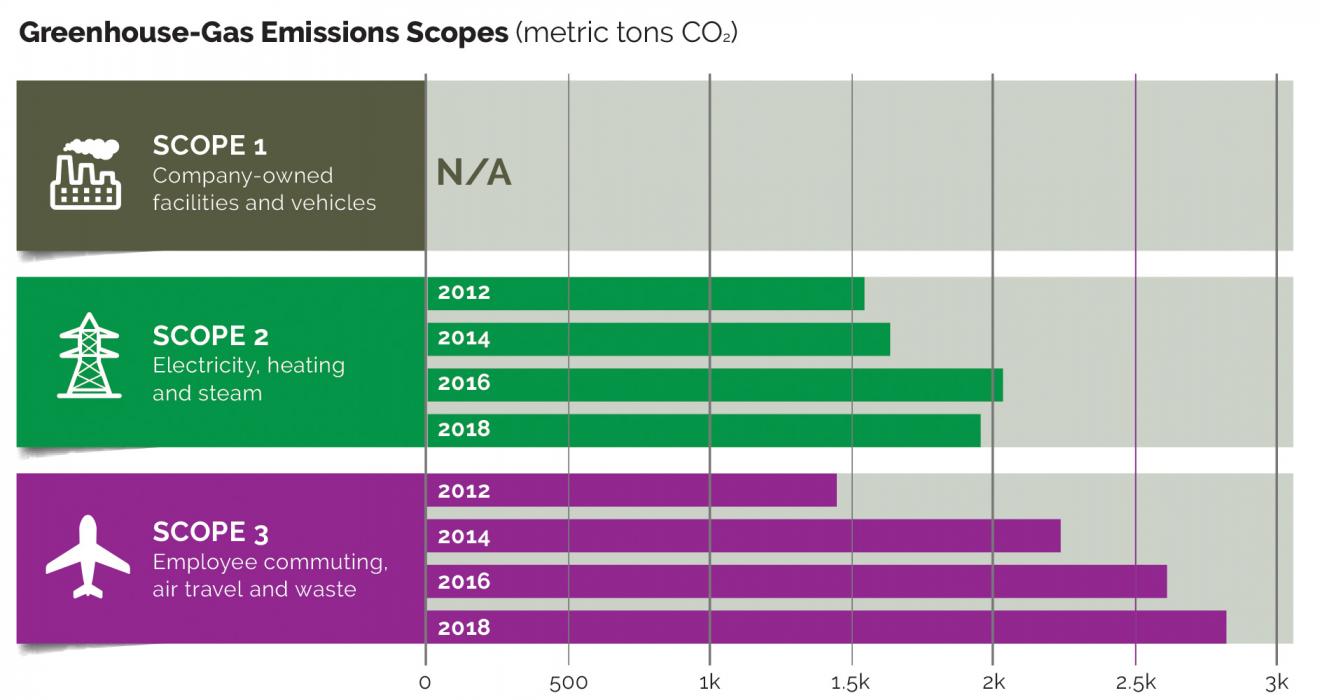
To measure and verify progress toward our carbon-footprint goals, every two years we conduct a carbon-footprint analysis of every sizable office with more than eight employees. We use our own carbon-footprint calculator – reviewed by external consultants – to analyze electricity use, office waste, heating fuel, employee commuting and air travel. Our air-travel analysis has historically accounted for every flight expensed by employees, but in mid-2018 we adopted a new accounting method that estimates air travel by total cost of flights. This more efficient method has been tested against a count of each flight and found to be accurate.
By offsetting all our air travel and by purchasing Renewable Energy Certificates (RECs) or using green power in some offices, we can realistically expect to meet our targets and goal of climate neutrality by 2030. Since we began purchasing carbon offsets in 2014 through Carbonfund.org (as donations to support renewable-energy and energy-efficiency projects), we have spent over $55,000 on offsets and neutralized all our CO2 emissions from air travel – a total reduction of 5,720 metric tons of CO2. Without carbon offsets, our air-travel emissions would be 27 percent of our total carbon footprint. With offsets, this figure is brought to zero.













